
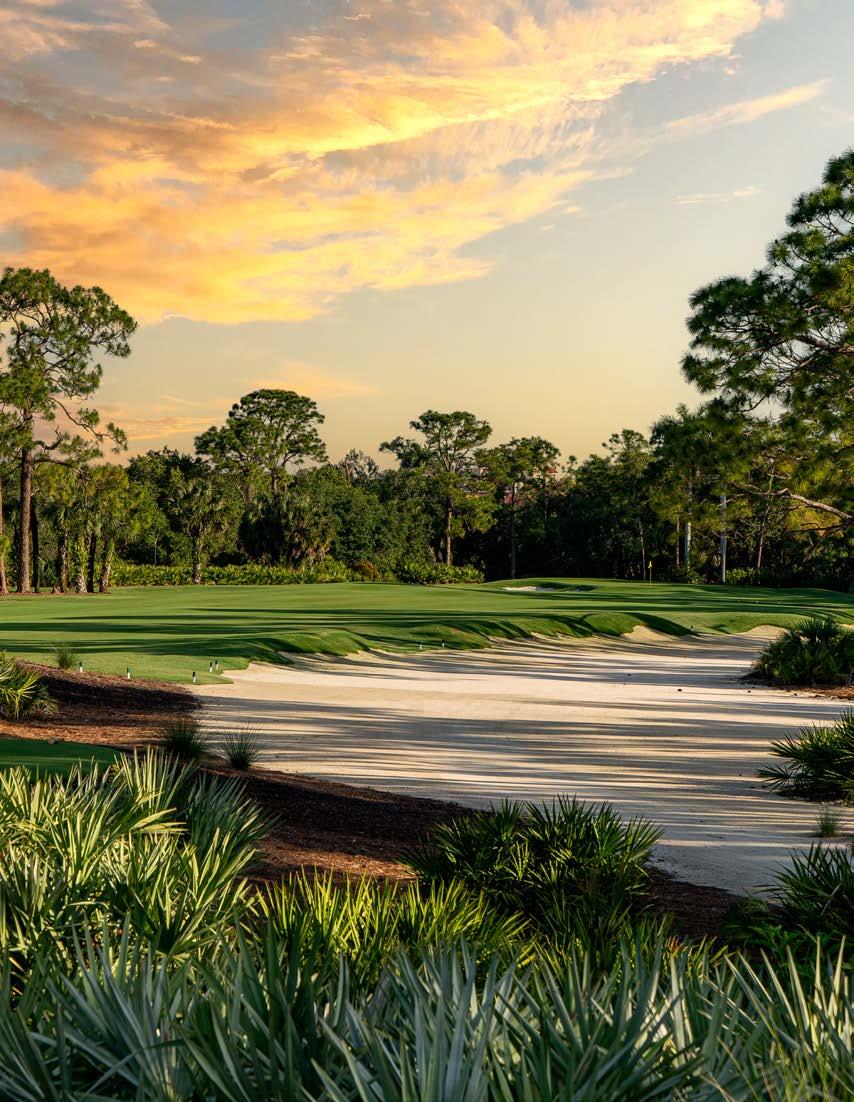



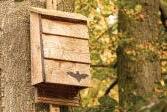
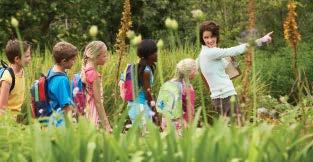
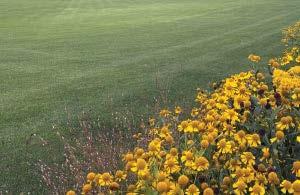


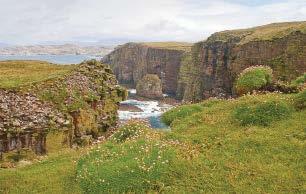
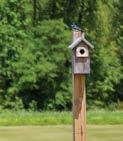
Aquatrols established The Fairways Foundation with the purpose of funding local and global projects that advance the conservation of our natural resources. These projects will help to preserve the environment we live and work in while encouraging education and stewardship not only within our own industry but also within wider communities.

There is no longer any doubt: Sustainability best practices are not only central to golf course success in the 21st century, but they’re on the short list of decision points for traveling golfers. And Audubon International’s suite of certification programs, including Audubon Cooperative Sanctuary for Golf (ASCP), Signature Sanctuary, and Green Hospitality/Green Lodging, are a big part of this sea change in customer demand and sensibility.
According to a Research and Markets report on Yahoo Finance in October 2024, the golf tourism market is projected to surge from $26.4 billion annually (based on figures from 2023) to $41.2 billion annually by 2030, a compound annual growth rate of 6.6%. The piece goes on to pinpoint reasons for this expected expansion:
“Sustainability is also playing a crucial role in shaping consumer choices within the golf tourism market. With growing awareness of environmental issues, many golf tourists are now prioritizing eco-friendly resorts and courses that promote sustainable practices. Golf courses that use water-saving irrigation techniques, minimize pesticide use, and implement wildlife conservation programs are appealing to environmentally conscious travelers…[they] are opting for destinations that offer opportunities to experience the natural environment in an eco-friendly manner, further blending their love for golf with sustainability.”
This trend is now mainstream: Golfers and travelers truly care about preserving their favorite destinations for future generations–for finding and maintaining that crucial balance between leisure and responsibility. And that leads to a stronger customer base for every partner in our growing portfolio; as we state on our website, “A certification from Audubon International elevates your organization’s public image, attracting environmentally conscious customers and stakeholders, and showcasing your leadership in environmental stewardship.”
This extends into the hotel industry, where we are adding new members seeking Green Hospitality certification across every sector, from large corporations like Marriott and Ritz-Carlton to independent resorts such as northern Michigan’s Keweenaw Lodge (read more about it Glenn Hasek’s guest column elsewhere in this issue). Likewise, our Sustainable Communities program continues to add new participants, including high-end communities such as Ford and Field Club in Georgia, also highlighted in this issue. Our environmental specialists work with each business entity’s management team, as well as community members, to implement the measures to achieve a sustainable culture. We are fielding more inquiries than ever regarding our Green Hospitality and ACSP programs.
Back in the golf realm, we see huge strides in how clubs and public courses are embracing sustainable best practices in their “interior” environments as well. According to this issue’s “From the Expert” submission by architect and Audubon International board member JC Chi, there are plenty of ways clubs can recognize their stewardship goals, whether it’s from the ground up via design-and-build plans, or retroactively via upgrades and systems changes that often don’t require a huge financial commitment. We’re also seeing more courses take part in initiatives such as Monarchs In the Rough–for which we received a grant from the FairWays Foundation that allows us to help superintendents and their crews plant milkweed habitat for the migrating butterfly, and BioBlitz, a species-counting contest where golf course members work with communities – including school kids – to log the wide variety of plants and animals that call these courses their home. This year’s BioBlitz runs through June 15.
Audubon International continues to lead the way to a more sustainable future for all, finding stronger focus through our comprehensive Signature Sanctuary Platinum program, which helps golf properties and destinations create “closed-loop sustainability” systems that deepen our connections to the planet and each other. With your partnership and commitment, the good work continues.

www.auduboninternational.org
518.767.9051 | Toll-free 1.844.767.9051
Audubon International Headquarters 120 Defreest Drive, Troy, NY 12180
STAFF
Christine Kane , Chief Executive Officer christine@auduboninternational.org
Fred Realbuto, Chief Operating Officer fred@auduboninternational.org
Greg Poirier, Director, Green Lodging/Green Hospitality Certifications greg@auduboninternational.org
Scott Turner, ACSP Certification Manager scott@auduboninternational.org
Jill Moore, Sustainable Communities Program Manager jill@auduboninternational.org
Sarah Honan, Environmental Program Manager sarah@auduboninternational.org
Kelsey King, Environmental Program Manager kelsey@auduboninternational.org
Alexandra Kellam, Environmental Program Manager alexandra@auduboninternational.org
Lauren Wengender, Environmental Program Manager lauren@auduboninternational.org
BOARD OF DIRECTORS
Henry DeLozier, Chairman
Rich Katz, Vice Chairman
Marvin Moriarty, Secretary
Henry Wallmeyer, Treasurer
JC Chi
Ruth Engle
Jennifer Grant, Ph.D.
Rick Lohman
Jim Pavonetti, CGCS
Jake Riekstins
David Robinson, CGCS
James Singerling, CCM
Bryan Stromme
Michael Williams
STEWARDSHIP NEWS STAFF
Vic Williams, Editor & Designer
Dan Shepherd Public Relations
Audubon International at National GolfDay Sacred Heart Hosts Earth Day Celebration Pinelawn Memorial Garden Makes History Audubon International Makes Trade Show Rounds
Oldfield Club Wins CertificationYet Again
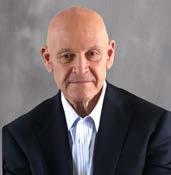
was April 14, 1935, when one of the most powerful dust storms swept across the lower region of the Great Plains.
On what came to be known as “Black Sunday” high winds dislocated millions of tons of topsoil and dirt so dense that caused some eyewitnesses to believe the end of the world was upon them.
Weather scientists subsequently explained the bone-crushing drought of the 1930s, as a convergence of conditions related to warmer-than-normal sea surface temperatures in the tropical Atlantic Ocean and cooler-than-normal surface temperatures in the tropical waters of the Pacific. It was these conditions that resulted in a southward shift in the jet stream reducing the amount of moist air that was normal for the Great Plains of the US. For the ordinary people who experienced this combination of events, it became the worst hard time. The resulting prolonged drought led to dust storms that brought forth what came to be known as “The Dust Bowl.”
Timothy Egan tells the Dust Bowl story in his 2006 book entitled, “The Worst Hard Time: The Untold Story of Those Who Survived the Great American Dust Bowl,” which won numerous nonfiction book awards. It is a clear-eyed telling of an unimaginable tragedy for which all must remember. “Dust Bowl,” as it came to be known, described the plains of western Kansas, southeastern Colorado, the panhandles of Texas and Oklahoma, and northeastern New Mexico.
The Dust Bowl era finally ended when rain returned to the region and the drought ended in 1939. Although drought would continue to be an inevitable part of life in the region, improved farming techniques significantly reduced the problem of soil erosion and prevented a repeat of the 1930s Dust Bowl devastation.
At Audubon International, the lessons learned from the Dust Bowl years can be harvested in six fact sheets that address water quality and conservation. The Audubon Cooperative Sanctuary Certification Program (ACSP) is an education and certification program designed to help organizations and businesses protect our environment, become sustainability leaders in their community, and provide positive bottom-line impacts on their operations. The “plando-check-act” approach of the ACSP includes certification as an incentive and reward for positive environmental actions and results.
There are eight programs dedicated to sharing information throughout such sectors as golf, hospitality, housing, and master-planned communities.
The Sustainable Communities Program helps communities – whether they are municipalities, large resorts, lake associations, planned communities, or college campuses – take steps to ensure that they are healthy, desirable, and vibrant places in which to live, work and play, for both today and tomorrow. This program is designed to support a community’s previously identified priorities and build the ongoing sustainability and planning efforts unique to each community.
Outreach and education projects help Audubon International program members gain recognition and support for their management efforts, while inviting the public to see that the organization, club, or community is being managed with sensitivity to the environment. The fact sheets describe a variety of outreach activities and community partner projects that have been successfully implemented by numerous Audubon International program members.
The Dust Bowl was a result of a combination of factors, including a severe drought, overgrazing, and dryland farming methods that left the soil vulnerable to wind erosion. It can serve as a cautionary lesson that one cannot be less vigilant and distracted from the essential use and conservation of life-sustaining water.
Our purpose at Audubon International is to tell these and other stories while encouraging everyone to collect more information and to be ever more watchful.

Henry Delozier, Chairman of the Board
Audubon International joined GCSAA and other Organizations for the 17th Annual Advocacy Event in Washington, D.C.
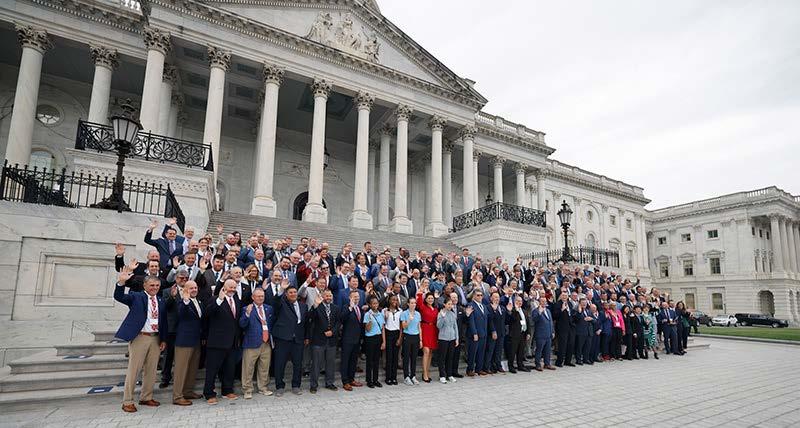
Audubon International CEO Christine Kane was among 250 golf industry leaders to attend the The 17th annual National Golf Day in Washington, D.C., April 30 to May 2. The event celebrates the game's $101.7 billion economy, nearly $6 billion annual charitable impact and many environmental and fitness benefits. The American Golf Industry Coalition, a group of the game’s leading associations and industry partners including Audubon International and GCSAA, hosts the annual event in Washington, D.C.
AGIC promotes the collective interests of the sport by advocating for legislative and regulatory issues with one voice. The coalition unites the golf industry in pursuit of goals designed to enhance the vitality and diversity of the recreational and business entities of the sport. AGIC serves as a banner under which collaborative issues can be addressed when it’s clear that one collective voice is most effective. Besides promoting
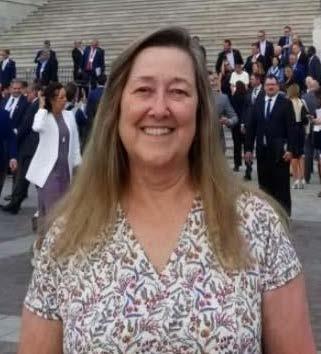
the value of golf facilities in communities across the U.S., and addressing specific pieces of legislation, the AGIC delegation will also seek to secure additional members into the newly resurrected Congressional Golf Caucus.
GCSAA is one of the four founding members of the AGIC, along with the USGA, PGA, and National Golf Course Owners Association. Leaders and hundreds of members of these organization and others attend the National Golf Day events. Other types of organizations that participate include Folds of Honor Golf; My
Future; My Game; Youth on Course; The First Tee; and many, more.
Participants spent the day meeting with members of Congress, the executive branch and federal agencies to discuss golf's 15,000 diverse businesses, two million jobs, tax revenue creation and tourism value. They also met with House and Senate members or their staff to discuss the key issues impacting golf and to share their personal experiences with lawmakers from their states. These personal interactions help lawmakers see the positive impact golf has on their constituents.

Participants spent the day meeting with Congress, the executive branch and federal agencies to discuss golf’s 15,000 diverse businesses, two million jobs, tax revenue creation and tourism value.
Discussed were the priority issues such as:
• Supporting passage of H.R. 1583 — Parity for Athletic Recreation Act — “PAR ACT,” sponsored by Congresswoman Claudia Tenney (R-NY) and Congressman Jimmy Panetta (D-CA).
• Supporting passage of H.R. 2369, S.1144 — The PHIT Act. This bipartisan legislation would allow Americans to use flexible spending accounts (FSAs) and health savings accounts (HSAs) to pay for sports and fitness equipment, exercise videos, participation fees associated with youth sports leagues, health club memberships, greens fees and lessons and clinics.
• Asking Congress to pass the 2025 Farm Bill and to continue to recognize the positive contribution of
turfgrass to our environment and economy by reauthorizing the National Turfgrass Research Initiative as a priority and to continue to prioritize turfgrass research at the USDA.
National Golf Day week also included the Community Service Project, which gave more than 225 attendees the opportunity to give back while demonstrating their professional skills. Past Community Service Projects have involved restoration and beautification projects along the National Mall, and this year expanded to include work at Old Soldiers Golf Course and East Potomac Golf Course.
More than 60 volunteers at East Potomac Golf Course worked with The Toro Company and the Eastern Shore GCSA and the National Links Trust to aerify the red course and repair cart paths. At the Old Soldiers Golf Course (part of the Armed Forces Retirement Home), over 140 volunteers worked with Casey Trees, Inc.; John Deere and the Mid-Atlantic Association of GCS on 13 projects that include: planting 24 trees; repairing deer guard around 200 trees; redoing three landscaping beds and seeding and topdressing nine greens; and the entire golf course will be mowed.
— Includes original reporting from GCM Online
On April 25, Sacred Heart Greenwich in Connecticut hosted its 4th Annual Earth Day Celebration. The event brought together the entire student body, faculty, and special guests for a morning of immersive, hands-on workshops and outdoor activities designed to inspire environmental stewardship.
Sacred Heart Greenwich was certified in 2022 as an Audubon Cooperative Sanctuary, one of only three schools in the country to receive this designation. This shows its strong commitment to sustainability and stewardship in five different categories: environmental planning, wildlife, water, resources, and education.
This year’s celebration featured more than 30 workshops, led by 72 student presenters and 31 faculty leaders, covering topics such as moss science research, bluebird habitats, composting, tree planting, and the much-anticipated return of the beloved baby goats. Guests from Network schools St. Philomena and Stuart Country Day School were also in attendance.
such as beekeeping, a student-run herb garden, and a bird-watching club. This spring, the school will host a ribbon-cutting ceremony for its first-ever chicken coop, marking another step in its commitment to sustainable practices. Sacred Heart Greenwich’s commitment to environmental stewardship and sustainability is rooted among its mission and goals, stating that

students of the Sacred Heart commit themselves to a social awareness that impels to action and promise to be stewards of the earth’s resources and alleviate the climate crisis.
For more information on Sacred Heart Greenwhich’s efforts, please visit their sustainability website.
Sacred Heart Greenwich has emerged as a regional leader in environmental education through programs
— Originally appeared in Greenwich Sentinel/greenwichsentinel.com. Story by Tricia Boyle
On June 9, Audubon International Assistant Director of Signature Sanctuary Certification, Sarah Honan, presented Pinelawn Memorial Garden and Arboretum in Farmingdale, N.Y., with their official Signature Sanctuary Gold Certification Pinelawn Memorial Garden and Arboretum originally enrolled in Audubon International’s Classic Sanctuary Program in 2020. Through their exceptional management of natural resources and emphasis on environmental stewardship, they have officially transitioned into our most elite certification program at the highest level that any single-use property can achieve. Pinelawn is now officially the only cemetery in the world to hold the designation of a certified Signature Sanctuary.
This unique addition to the Signature Sanctuary Certification Program is a prime example of just how versatile the program itself can be. While the majority of members include golf courses, Pinelawn sets a new

standard for other classifications of “green space” like cemeteries. Similar to golf members, the Pinelawn maintenance team follows an environmentally conscious approach to managing the property, which is outlined in a Natural Resources Management Plan, a requirement for all Signature Sanctuary members. Topics such as naturalization, wildlife habitat enhancement, integrated pest management, water quality and water conservation, and environmental education and outreach are covered in the document as they pertain to that specific property. Pinelawn has demonstrated tremendous effort and dedication to upholding these criteria, especially when it comes to education and outreach. From ladybug and butterfly releases to a very successful honeybee program, Pinelawn does a wonderful job bringing the community together to appreciate the harmony that can exist between humans and nature.
Visit pinelawn.com for more information.
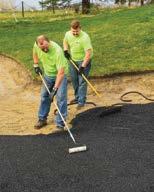
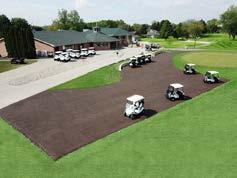

Oldfield Club, a private, member-owned club in Okatie, South Carolina, has retained its designation as a Certified Audubon Cooperative Sanctuary through the Audubon Cooperative Sanctuary Program for Golf Courses, an Audubon International program. Oldfield has been an Audubon “Neighborhood for Nature” and a Certified Audubon Cooperative Sanctuary Golf Course since 2004, and a Certified Audubon Sustainable Community since 2018. After designation, courses go through a recertification process every three years.
“It is a tremendous honor to receive our recertification as an Audubon Cooperative Sanctuary,” said Oldfield Club General Manager Gautam Patankar. “Leanna McMillian, Community Naturalist, and Thomas Davis, Director of Agronomy, lead this initiative and ensure that the golf course staff is carefully monitoring the standards set forth by Audubon to maintain the certification. Being one of a small handful of golf courses in South Carolina with this distinction is something we are very proud of.”
Highlights of Oldfield Club’s ongoing conservation efforts include:
• Wildlife Conservation Activities: Oldfield promotes strong habitats throughout the property to ensure wildlife can survive, thrive, and reproduce. This includes maintaining a bird rookery on site, installing bird nesting structures across various golf holes, and preserving environmentally sensitive areas and vegetation corridors.
• Water for Wildlife: Oldfield practices environmentally sensitive maintenance around all surface water and encourages the growth of littoral and emergent vegetation around golf ponds, which supports aquatic life and bird species.
• Water Conservation & Water Quality Management: Oldfield Club has invested in advanced tools like the Pogo moisture meter and an on-site weather station to guide precise irrigation decisions. The agronomy team also applies wetting agents and growth regulators, performs irrigation audits, and regularly monitors system efficiency.
• Chemical Use Reduction & Safety: Through soil analysis testing, Oldfield’s agronomy team is able to make informed, targeted decisions for pest and disease

treatment. They also prioritize healthy turf management with proper mowing, fertilization, irrigation, and compaction practices.
• Education & Outreach: Oldfield proudly displays Audubon International signage and offers educational brochures in the pro shop. They’ve also launched a honeybee program and continue to host an annual Golf BioBlitz, encouraging member involvement and environmental awareness.
For more information on Oldfield Club and community, visit www.oldfield1732.com.
Leadership and Environmental Specialists from Audubon International logged a busy winter season on the road attending golf/sustainability trade shows from coast to coast. Over several weeks they greeted colleagues in various golf and lodging industry sectors, connecting with current prospective partners and sponsors, and illuminating attendees on the benefirts of membership and certification. Here’s a rundown:
San Diego, California | February 3-7
Attendees: Christine Kane, Frank LaVardera, Scott Turner
Great attendance at the Trade Show and the Audubon International booth was busy for both trade show days. Along with speaking to current and prospective members, staff also met with Jim Culley of Seed King Enterprises. Seed King provides all of the seed for the Monarchs in the Rough program.
On Feb. 2, Frank LaVardera gave a seminar entitled “The Importance of Water Quality Monitoring on the Golf Course.” The seminar was a complete sell out with approximately 150 attendees.
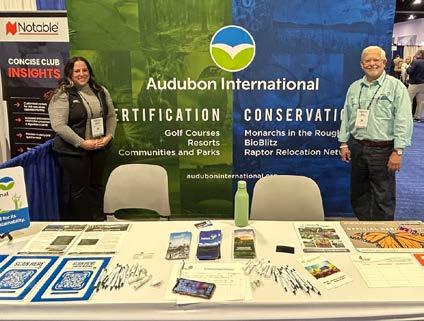

Club Managers Association of America
Tampa, Florida | Feb. 4-7
Attendees: Greg Poirier and Sarah Honan
Another well-attended show with lots of traffic at the Audubon International booth – current members, potential members, and other industry leaders.
Niagara Falls, Canada | February 25-27
Attendees: Scott Turner and Sarah Honan
Turner and Honan many prospective members among our north-of-the-border friends while providing information about the ACSP and Signature programs.
Providence, R.I. | March 4-6
Attendees: Frank LaVardera and Alexandra Kellam
Once again, representatives met with both current and prospective members at this well-attended event. LaVardera and Kellam also met with current sponsor BioBoost Nest and a potential new sponsor.
By JC Chi
Kuo Diedrich Chi Planners & Architects
The game of golf has maintained its growth across the global scene and its wide-ranging popularity has expanded through an array of different formats. Places that offer golf, whether it’s a private club, resort getaway, or public venue, are now offering new ways to enjoy the game. Present day, beyond playing an 18-hole round or spending a few hours at Topgolf, there are many more ways to enjoy the game with par-3 and short courses, reversable tee layouts, Himalayas style greens and putting courses, driving range performance centers, indoor practice complexes, and simulator bar lounges. And all that variety has resulted in new construction projects scattered all over the country and in many different contexts: historic country clubs, remote golf destination locales, suburban malls and strip centers, and urban city centers. Meanwhile, one of the great challenges to all types of construction is the total cost, which is at an all-time high as post-pandemic shortages in natural resourc-
es, fewer suppliers, higher labor costs, and tariffs on construction materials have become the new normal. And as it relates to the focus of this article, it’s all occurring in conjunction with the height of environmental awareness and concerns about waste management, air and water pollution, climate change, and deforestation.
Over the past five years, my architectural firm Kuo Diedrich Chi (KDC) has averaged approximately 30 club projects each year, but less than 10 percent of more than 150 clubhouses, lodging, and amenity structures that we’ve designed seriously considered an eco-friendly certification program. And ultimately, none of them reached their goal, the overriding reason being the heightened cost as a point of entry. Sure, the Covid Era changed the cost-benefit equation considerably, but this is the world we live in moving forward.
In addition to construction costs often being a deal breaker, very few clubs have the appetite and space available to displace their members, lose operational revenue, and demolish an existing building in favor of

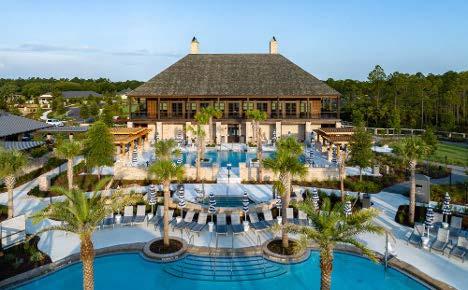
constructing a brand-new facility. Over three quarters of our projects are renovations of existing facilities, some over a century old. Simply speaking, it’s more economically feasible to work with what’s there and as a result, the outdated infrastructure and building systems which are overwhelmingly expensive to upgrade, makes the viability of pursuing a certification program unrealistic.
That said, even though the obstacles toward sustainable design can be challenging, that hasn’t prevented many architectural firms from achieving great strides in eco-friendly design–and any measures to implement sustainable aspects can still be significant as a positive impact on our environment. Perhaps 20 projects incorporating certain aspects of sustainable design can be just as beneficial as five that are fully certified through a program.
One such KDC effort is the Camp Creek Inn and Amenity Center at the Watersound Club, which opened in 2023. Located along Highway 30A on the Gulf Coast of Florida, the pre-existing Tom Fazio course has been a 20-year member of the Audubon Cooperative Sanctuary Program. Our recent project encompassed an extensive set of new amenities across three adjacent campuses (Inn, Wellness, Racquets). Since the overall site was surrounded by significant wetlands throughout the property, the-owner operator, St. Joe Company, approached the new construction effort with a high sensitivity to reduce the environmental footprint, maximize energy efficiency, and implement a process that streamlines all product and service delivery methods to their operational approach.
There was a concerted effort to create a “sense of place” while also promoting a very pedestrian-oriented, eco-friendly lifestyle. By vertically orienting its
75 rooms over the golf operation, we created an overlap of food and beverage areas and support spaces which not only minimized our ecological footprint, but it also streamlined the operations. In building design, we use the term “tare” to account for non-usable or accessory elements such as wall thicknesses, vertical chases, mechanical rooms, and circulation that are excluded from the calculation of net usable space. Our tare percentage for the Camp Creek Inn was approximately 2.5% less than had there been a separate golf operations building. That saved about 2,000 square feet of construction materials and an equal reduction in impervious site development area.
Additional design aspects include extensive wraparound porches with large energy efficient windowed walls on both the Inn and 12,000 square-foot Wellness Center. These porches provide for cooling to reduce energy consumption, while large windows allow for an abundance of natural light to minimize the need for artificial lighting during the daytime. A variable flow HVAC system that’s ductless and uses refrigerant for heating and cooling offers a great amount of efficiency while treated wastewater from the local utility agency is used for clubhouse and golf course irrigation. From the waste side of their operations, their casual dining facilities use bamboo plates and supplies and paper to-go boxes that can be recycled.
As it relates to Audubon International’s Green Lodging Program and the six qualifying categories (Communication, Community, Waste & Materials, Water Conservation, Energy, and Chemicals & Air Quality), Camp Creek Inn serves as a model example of a facility that because of their own best practices, may already be primed for a Green Lodging Certification.
JC CHI is a Principal and Co-Founder of Kuo Diedrich Chi Planners & Architects based in Atlanta, GA. With over 30 years of experience in the club design industry, he has gained expertise in the areas of golf development feasibility, amenity master planning, facility programming, and design implementation of golf and recreational facilities on a global scale. Above and beyond having served the role as design visionary and architect for projects throughout the United States, he has led efforts in the Caribbean, Mexico, Central America, Middle East, India, and Southeast Asia.
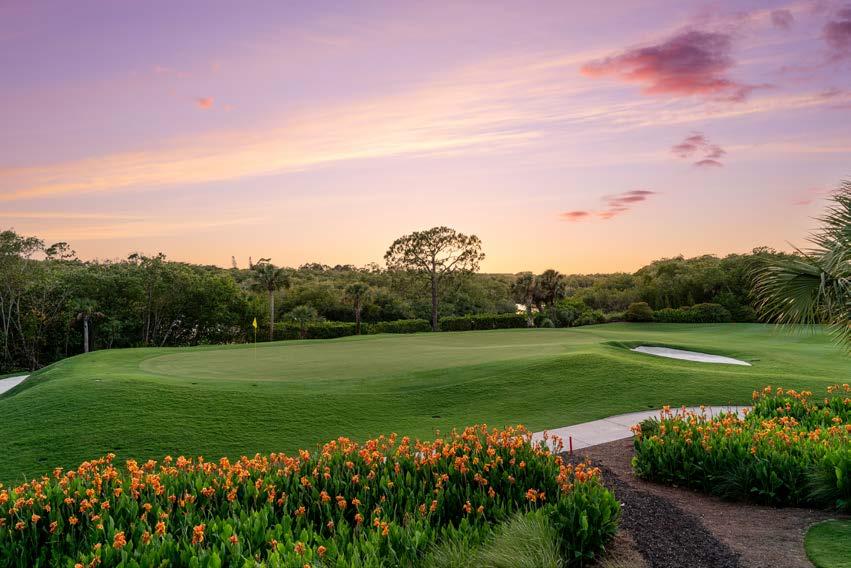
By Vic Williams
Apparently the Amish community has a longer reach through America than they might realize, especially when we’re talking about something called “biochar.”
For proof, just start a conversation with Ken Kleinedler, who since 2016 helmed the agronomy team at Collier’s Reserve, a residential community of 224 single-family homes nestled peacefully along the Cocohatchee River, one of Southwest Florida’s most scenic waterways, two miles from the Gulf of Mexico and four miles from I-75.
Collier’s became the very first club to earn Audubon International Signature Sanctuary certification in 1994. They’ve maintained their certification without interruption ever since – elevated to gold in 2017, with an eye on now-available Platinum certification in the future – and Kleinedler isn’t about to slack off now. Hence his search for a truly carbon-based water filtration system, which led him back to his home state of Ohio.
“Biochar is like a giant carbon Brita filter,” he says. “I sourced out the best biochar I could find from the Amish in Ohio; they burn different types of wood, and then they activate it with a compost or a peat moss so that it has a certain amount of beneficial biology inside that biochar.”
These potent “burned bits” offer myriad benefits to a water system that struggles with salt content, via slow seepage from the Gulf of Mexico or violent hurricanes such as Ian a few years ago, which Kleinedler says left “seventy percent” of Collier’s recently remodeled golf course underwater.
“We apply a lot of biochar – a lot of carbon onto our soil. So even though we’re in these sandy Florida conditions, we don’t sacrifice performance. In fact, we enhance it by feeding the biology and by utilizing carbon to keep these salts away. My water source is reclaimed water, high in sodium and bicarbs.”
This type of water tends to attract less-than-ideal guests including snails, and again, Kleinedler goes
carbon-ating to thin them out. “Rather than using chlorine tablets, I fill micronized socks with biochar so everything that sits in our wet-well constantly gets cleaned. It’s extending the life of my pumps, but it’s also cleaning the water below. I use a natural wetting agent. It’s super slick, biodegradable and effectively cleans our irrigation water lines. Best of all, it doesn’t negatively affect the soil biology out on the golf course, it enhances it.”
Such is the state of well-researched environmental stewardship at Collier’s Reserve, which never wanes season to season and year to year – all in service to maintaining great playing conditions for members even in the wake of big weather events like Ian…or in calmer days of spring.
“It’s the season to aerify and perform those agronomic practices that make the course conditions great year-round,” Kleinedler said in early May. “We are doing all our capital projects. So right now, we have roofers here at our facility. We are performing bridge touchup work. We’re also planning to swap out 1,500 sprinkler heads this summer. There’s always a project.”
One of the biggest “projects” of the past five years for Kleinedler and his crew was surviving Ian’s aftermath. As usual, he also turned the tragedy into fertile soil–literally–for professional growth. “Some of the golf holes were completely inundated with saltwater, and we were without power for a period, so we had to think creatively. We utilized all our tanks to maintain a decent water supply, and treated what water we had with carbon, humic, calcium, and silica to flush out the saltwater in the greens and preserve the grass in case our water service wasn’t immediately restored. This occurred shortly after the completion of a new golf course, and we had to navigate the devastation that followed. During the restoration process, we focused on reshaping the course, which deepened my understanding of soil management. Over the past few years, I’ve immersed myself in soil science and connected with industry professionals involved in regenerative agriculture. I’ve gained
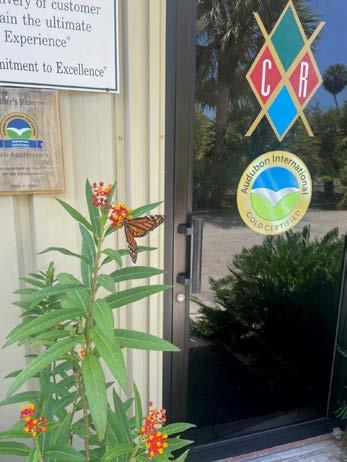
“The membership has a deep appreciation for nature, which is one of the key attractions of the club. They are inspired by the environment.”
—
Ken Kleinedler
valuable insights on how to apply these methods to golf course management and build plant resiliency through a balanced soil program. We’ve learned a great deal, and I’m proud to say we’ve never lost a single piece of sod. There are minimal wet areas, and the ground remains firm due to the strength and fibrous nature of the root systems. The performance and playability of the course are closely aligned with sustainability; they complement each other. It’s possible to achieve excellent playing conditions while adopting more natural, less synthetic practices.”
He adds that Collier’s status as a “founding” partner of sorts with Audubon International Signature Sanctuary Certification just spurs him in to discover and implement sustainable best practices already bat-

tle tested in other agricultural settings. “Over the last couple of years, I’ve really made the effort to learn more about what is being done around the country or the world with regenerative agriculture, then use those same practices on golf course maintenance. [For instance], I use bio-complete compost as an additive to my existing compost pile, which serves as a diverse microbial inoculate. And I mix that with the activated biochar along with some available calcium and other natural ingredients to turn it into a soil superfood.
Kleinedler describes other state-of-the-art systems and methods his members have greenlighted recently.
“We use Hydro Wick drainage to continuously elevate playing conditions. It’s minimally invasive and you can play on it the next day. Basically, a stainless-steel rope sleeve is filled with coarse sand and installed into the ground around a six inch depth, then tied into a main drainage basin. Lines are spaced all around that basin to pull in excess moisture after rain events – imagine spokes on a bike tire. We have an exceptional mainline drainage system, and this just took it to another level.”
“We are also the first course in Naples to implement Turf Rad soil sensors. It has been a game changer for water management. Sensors are mounted on the back of our mowers. They take microwave readings of moisture levels four inches down into the soil – 7 measurement readings per second. When our mowers get back to our facility at the end of the morning, all the data is uploaded and overlaid on our irrigation computer. For us, TurfRad checked all
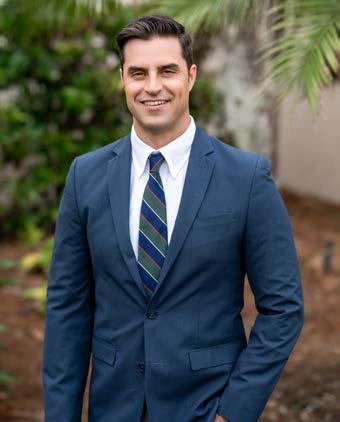
the boxes: sustainability, player performance, energy and cost savings, it was a no-brainer. We’re now maximizing the water use on the golf course, and we’re starting to see some savings.”
As a member of one of the most golf-rich regions of the nation, Kleinedler isn’t afraid to share his work with other clubs – or tap into their expertise. “It’s a big band of brothers and sisters down here, so everybody’s always helping each other out and sharing what works and what doesn’t.”
Despite recent storms and an even more recent drought, Kleinedler reports that the flora and fauna at Collier’s are holding strong.
“It’s entirely consistent with the natural environment,” he says. “Due to the ongoing drought, the edges of our lakes are becoming more exposed, placing additional stress on aquatic plants. However, the water levels have not yet dropped to a point where oxygen depletion poses a risk to the ecosystem. As
for the wildlife on the golf course, the population remains as robust as ever. We have numerous alligators inhabiting the ponds, and I’m currently observing a swallow-tailed kite outside my window. While we did lose a few bird boxes after the hurricane, this presented an opportunity to refresh the installations. We now have 29 bird boxes across 18 holes, with different types tailored to support various species.”
“The membership has a deep appreciation for nature, which is one of the key attractions of the club, in addition to the golf course. Many members are so inspired by the natural environment here that they have reached out to our bird box installer to have boxes placed on their own properties. This reflects the strong sense of community involvement that we foster here. We also have a natural resource group that organizes events such as tree walks, bird walks, and educational seminars. On occasion, I extend our educational efforts off property; for instance, I spoke at Naples Botanical Garden about Audubon certification and how individuals can make a positive impact

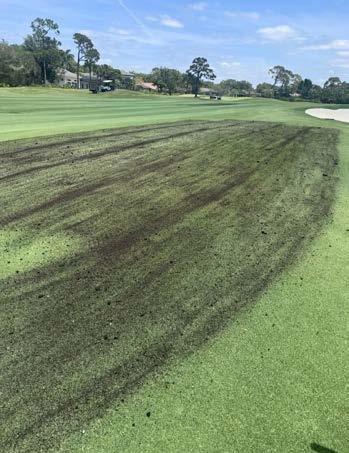
in their own communities. We even take in rehabilitated Gopher Tortoises from the local Conservancy of SWFL. It is a unique and exceptional environment.”
Kleinedler is keenly aware that his club’s status as the world’s first Audubon International Signature Sanctuary is both a blessing and an expectation – one that’s gladly accepted. “I’m pushing hard to be the first Platinum Certified Signature Sanctuary. It would be amazing to go full circle after 32 years here – starting out with the world’s first certification, then becoming the world’s first platinum sanctuary. It would be very fitting.”
It would also be yet another feather in Collier’s cap, and proof that property-wide cooperation and a cando spirit, functionally and financially, feeds right into Audubon International’s quest for excellence in all its partners.
“The program itself upholds the highest standards,” Kleinedler explains. “I am fortunate that this is complemented by such a supportive membership. They consistently encourage, ‘Whatever you need,
whatever you want to pursue, go for it.’ Whether we are committing to a natural product for the upcoming season or implementing new technology like the Turf Rad sensors, if it pertains to sustainability, enhancing the program, or improving the environment, I have never encountered a ‘no’ regarding our environmental initiatives in the past 15 years.”
“The membership has a deep appreciation for nature, which is one of the key attractions of the club. They are inspired by the environment.”
— Ken Kleinedler
“I am so grateful to work at a generous high-end private club that supports both our agronomic and environmental programs and initiatives. I’m able to try things, to go outside the norm, and the results have been incredible. I can’t wait to see what else we can do in the future. Collier’s Reserve is truly a special place.”
For more on Collier’s Reserve, visit https://www. colliersreserve.com
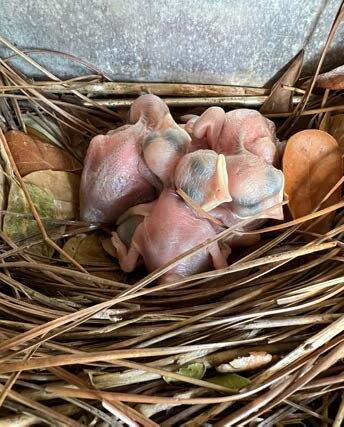
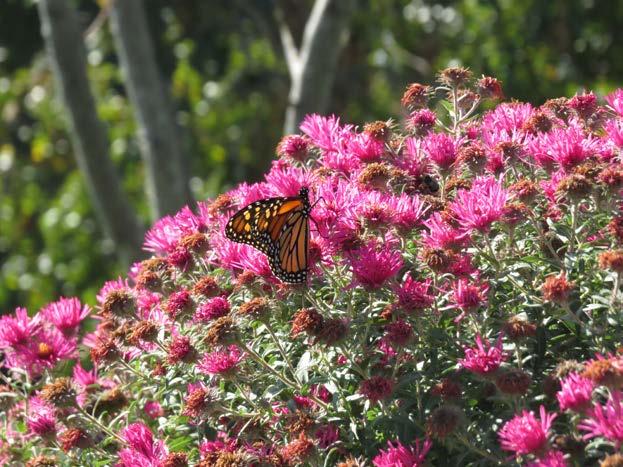
Located just south of Savannah, Georgia along the Ogeechee River, the Ford Field and River Club private residential community–originally a retreat for Henry Ford and his wife, Clara–is all about enjoying abundant Low Country sunshine with a constant and consistent eye toward being as light on the land, water, and sky as possible, including its built environments. Its Pete Dye golf course achieved Audubon Cooperative Sanctuary for Golf Certification in 2000, and its rich natural mix of wetlands, tidal creeks, ponds, lakes and woodlands have all been preserved with care.
To deepen this commitment, the club has also applied to begin the certification process for Audubon International’s growing Sustainable Communities program.
“I am looking forward to having Audubon Internation assist with cost effective and creative ways to implement more sustainable practices in our existing
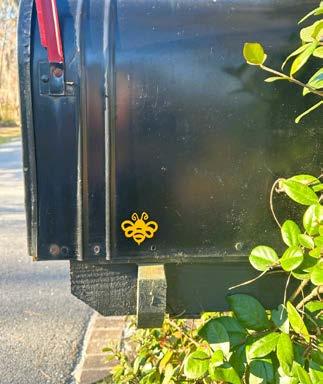

infrastructure as well as our new, developing amenities and programming,” says Megan Hoog, Ford Field and River Club’ss naturalist.
The club’s Naturalist Center—set within its “Oyster House”—is home base for a range of educational activities for members of all ages, from bird counts to gator-tagging, kayaking tours, beach excursions, shelling trips, and more. Members are partners in a popular and effective yard-based bee box program, which includes the display of unique reflection stickers alerting the club to the presence of protected bee boxes so pesticides aren’t sprayed in their vicinity.
“Many of our members choose to live here because of the natural beauty of our area and are already very conscious of their personal impact on the environment surrounding their homes. We have members with their own beehives, native pollinator plants, and many are actively involved in the nearby community with nature projects through our region-
al birdwatching society and native plant societies,” Hoog says.
Also part of the culture:
• Lake bank management guidelines
• Community farm that grows herbs and produce for use in their kitchen
• Strategic mosquito spraying to avoid pollinator habitats and beehive locations
• Citizen science initiatives such as a bluebird box monitoring program
• Onsite yearly native plant sale for members using local vendors
• Promote using native plants in landscaping in ure review board architect guidelines
• Quarterly water quality tests in lakes
“Residents were excited to learn more about this certification during a recent Q&A meeting,” Hoog concludes. “They have remarked about how this certification will give our community a solid sustainability foundation to fall back on as we make decisions through a crucial phase of amenity development and membership growth.”
For more visit fordfieldandriverclub.com
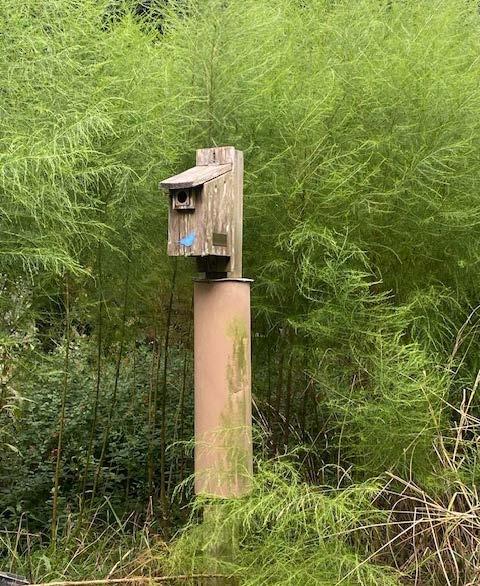
Stay tuned to a future issue of Stewardship News for details on our next new Sustainable Community Member, Belfair Community in Bluffton, South Carolina.
As part of the Sustainable Community Certification, members are required to complete recertification every three years. A key benefit of membership is the development of a personalized long range sustainability plan. This plan, with specific goals and action items based on 15 focus areas becomes a living document that guides residents and staff toward achieving environmental goals. Regular review of the plan helps new community members understand past progress and inspires future initiatives, reinforcing the unique and far-reaching value of sustainability planning for each community.
Current Members in the process of re-certification
• Hilton Head Island, SC
• Hammock Dunes, FL
• Rio Verde, AZ
• Village of Hawthorn Woods, IL
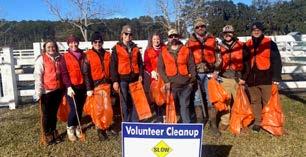
For Audubon International Sustainable Communities every day is Earth Day! Here are some highlights from some of our SCP members and all they do to make our earth a better place.
• Litter clean-ups from roadways to waterways
• Planting vegetable and pollinator gardens
• Creating and enhancing wildlife habitat – beekeeping to bird boxes
• Nature walks promoting mindfulness, health and outdoor education
• Removal of Invasive species from Cane Toads to Chinese Tallow Trees
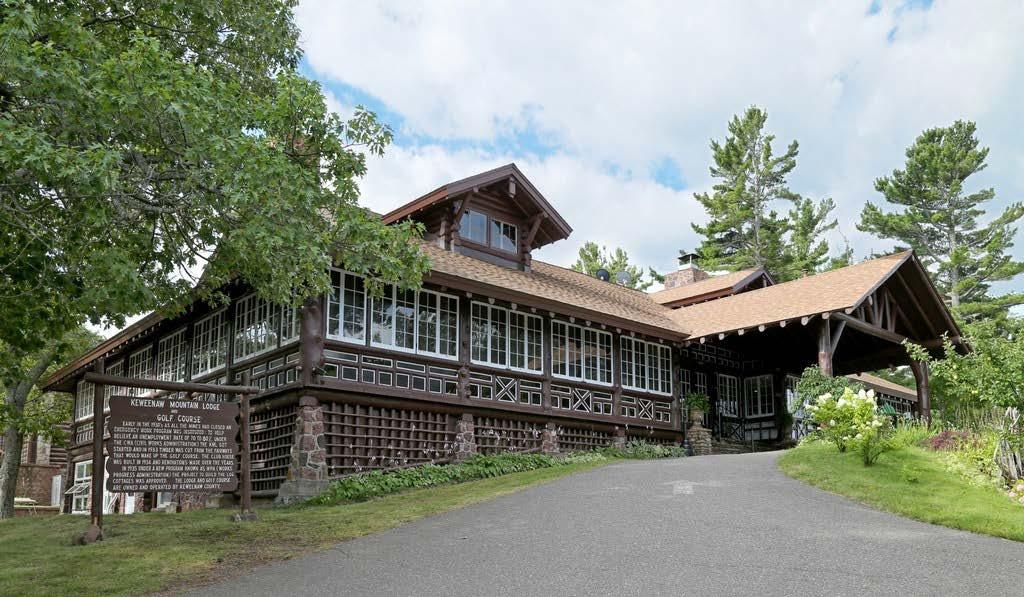
By Glenn Hasek, Editor/Publisher, Green Lodging News
Folks staying at the Keweenaw Mountain Lodge in Copper Harbor, Mich. have at least one common goal in mind—getting away from it all. To get to this historic wilderness lodge in the upper peninsula of Michigan, one must drive as far north as Michigan stretches into Lake Superior.
Keweenaw Mountan Lodge visitors are not only attracted by its remoteness, but also by the area’s natural beauty and the property’s sustainability initiatives. The Lodge is a Certified Gold Audubon International Green Lodging Establishment, has earned B Corp Certification, and is a Dark Sky Park. The Lodge is also in pursuit of Audubon International Cooperative Sanctuary Golf Course certification for its nine-hole golf course.
The lodge consists of 24 cabins that were originally built in the 1930s. “It was built to alleviate unemployment during the Great Depression,” according to John Mueller, part of the team that owns and manages the property. The Lodge consists of a main building built in 1934. The golf course was added the same year. The main building was expanded in 2007. The employee housing was initially built in 1984 as a motel. It was transitioned into employee housing in 2020.
John bought the property in 2018 after it went up for auction. It was previously owned by the county in which it resides. The county had difficulty keeping up with the maintenance for the last 30 years on the resort that is now on the National Register of
“Our goal is to get better through the certification process. Our aim is not to use it for marketing purposes.”
— John Mueller
Historic Places.
“We have been working through deferred maintenance issues the past seven years because of the lack of maintenance the previous few decades to ensure the property is in good shape,” John says.
The Lodge had been a member of Audubon International for several years but did not become certified as part of The Green Lodging Program by Audubon International until last year. The certification is proof of a commitment to water quality, water conservation, waste minimization, resource conservation, and energy efficiency.
“Our goal is to get better through the certification process,” John says. “Our aim is not to use it for marketing purposes.”
There are four wells on the property with two tied to drinking water. By using low-flow fixtures and keeping a close eye on water consumption metrics, the Lodge is highly water efficient. LED lighting helps keep energy consumption low. When the cabins were originally built, heat efficiency was not prioritized. They have since been insulated and have had new storm windows put in. Given its remote location, recycling is a challenge. For example, one must drive two hours to drop off glass for recycling due to the local single stream recycling service’s limited ability to efficiently sort glass (whole or broken) from other materials. Still, paper, plastic, metal and glass are recycled to minimize the likelihood of landing in a landfill. Vehicle oil is also collected for recycling. There is a strong emphasis on reducing the amount of waste going to the landfill in the first place.
Martin Mueller leads the green team and is the property’s sustainability champion. He said 20 percent of the food served on property is locally produced. The chef is particular about how much
food she makes, and the food waste rate is only 3 to 5 percent when compared to many restaurants that throw out 30 to 35 percent.
“Recycling should be the last thing you do,” Martin says, emphasizing the importance of reducing and reusing.
John adds that the Lodge will soon test dissolvable EarthSuds tablets in an effort to reduce the amount of soap waste and single-use plastic waste used with shampoo and conditioner.
To maintain a high level of indoor cabin air quality, cabins are not rented out continuously but are given a break for airing out.
Visitors driving electric vehicles can recharge them at one of the resort’s three charging stations.
To maintain a high level of service consistency, employees are trained in the resort’s values. The Lodge team is working with Mammoth Climate which helps organizations meet climate targets by bringing climate literacy and employee-led emissions reduction into the workday.
B Corp Certification is a designation that a business is meeting high standards of verified performance, accountability, and transparency on factors from employee benefits and charitable giving to supply chain practices and input materials. Keweenaw Mountan Lodge is a rare case of an individual lodging establishment having achieved B Corp Certification.
Through Dark Sky International’s DarkSky program, the Lodge has become an attraction for travelers looking to star gaze with no light pollution. From April 24 to 26, the Lodge will host its third annual event around International Dark Sky Week: The Upper Peninsula Dark Sky Festival.
“People come up here from all over for dark skies and clean air,” Martin says.
Moving forward, the team at the Lodge is studying the addition of a 272-panel solar installation that would power the main building, employee housing and activity center.
Glenn Hasek can be reached at greenlodgingnews@ gmail.com.
Situated perfectly as a natural buffer between the I-4 corridor and a conservation area called Wekiva River basin, and winding through the Alaqua Lakes community about a half hour north of Orlando, the Fazio Course at Heathrow Legacy was one of the very first in Florida to earn Signature Sanctuary Certification from Audubon International, back in the early 2000s. It maintained that “classic” certification for about a decade and a half before lapsing in 2017. That’s when well-known superintendent John Kopack—who oversaw the Fazio’s construction in 1998—began his third tour of duty at Legacy Club, going back to work for parent company Concert Golf with laser-focus on recertification.
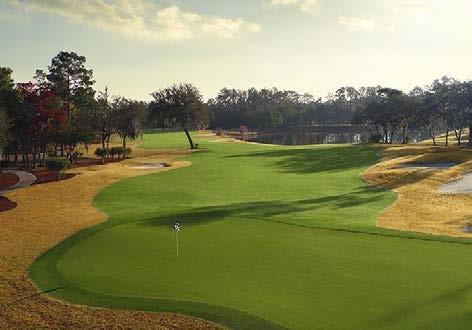
Mission accomplished: The course has officially attained Signature Sanctuary Bronze status.
A Chicagoland native, Kopack has spent the bulk of his career in Florida, with one detour to Colorado. “This is my 50th year in the business,” he says. “I started in 1975 in a little town called Zellwood, a golf course called Zellwood Station.” Eventually he made his way to the Legacy Club. “Taylor Woodrow was the builder of the development and the golf course, and they pumped extra hundreds of thousands of dollars into Audubon [International] membership and certification. He also we gave the Wekiva River basin to the west of us to the St. John’s River Management Authority – thousands of acres for a conservation area.”
During his first go-round at Heathrow Legacy, Kopack established his bona fides as a top-notch environmental steward before taking a break from the agronomy and maintenance side of the golf business. “I went into golf course sales. I was getting burned out,” he says. He then was offered a position oversee-
ing golf and grounds at Marriott World Center in Orlando, after which he did some water, soil, and tissue consulting work at Brookside Laboratories–water, soil, and tissue before returning to Legacy. “That’s when we started back up [on the road to Audubon International recertification].”
Setting aside the Wekiva River Basin for no development at the start also set up Heathrow for an irrigation source that’s clean, natural, and self-contained. “Markham Woods Road is the eastern border of the whole property. Water flows downward toward the Little Wekiva River, which is the western border of the property. Everything flows into a final pond, our irrigation lake, two miles from the maintenance shop – the most western point on the property. We draw that water out and filter it again out on the golf course. I have no wells. I have no reclaimed water. We rely strictly on stormwater runoff.”
It’s a water management approach that works, even though Kopack gets “real religious” when occasional drought sets in. “Sometimes it gets a little hectic. You’re begging for [rain] one day, and then the
rainy season comes in mid-June, and you’re cursing it again.”
Not that all that summertime storm water isn’t welcome to the course’s hundreds of acres of wetlands. “When we built the course, we had over a hundred acres of wetlands in all kinds of different areas,” Kopack says. “One’s 80 acres, one’s two acres, one’s seven. There’s 30 of them, all different sizes. We’ve always had those conservation areas and wetlands.”
That creates out-of-play corridors that attract a wealth of wildlife. “There are turkey everywhere, deer, birds of prey. The wildlife is amazing it here. I drive around every day and a lot of it never gets old. You’ll see five, eight, ten-point bucks in somebody’s front yard and they’re just staring at you. We’ve also got a ton of birds out here – I’ve been doing a Christmas bird count every year. I was doing it down the street at another club for a while and then carried it over here.”
Kopack has also installed bird boxes and duck boxes, along with wetland-friendly plants such as canna lilies, spartinas and arrowheads. The wildlife corridors between homes and the rough offer ways for all kinds of wildlife to get through, while other grassy areas attract mice, fox, and even more birds. Next, after doing some planned water testing, he wants to enroll the course in Audubon International’s popular Monarchs in the Rough program, which provides participants milkweed seed to attract and feed butterflies during their annual migration seasons. “I would love to do that. I have a butterfly garden with a bunch of wild milkweed and got monarchs year round.”
Kopeck adds that the club also uses environmentally conservative paint on its buildings and structures, energy efficient lighting in all areas, and variable-speed water pumps. “The irrigation system is unique in that no heads go toward lakes. No water sprays into natural areas. We maintain buffer zones around all lakes, with no pesticides or fertilizers.”
The golf course itself is planted with mostly Bermuda – champion ultra dwarf on greens and 419 on tees, rough and the fairways. “We also have some seashore Paspalum – in the beginning we put it in 30 out-of-play acres that wouldn’t need to be irrigated, but now I’ve got it all over in the fairways. It’s not in the greens but it’s made its way around the course pretty much. And that’s OK. It works well.”
As part of the Signature Sanctuary requirement to enhance community outreach, Kopack plans to “adopt” an elementary school class and meet with
them monthly to discuss environmental best practices, as well as educate them on the importance of creating wetlands, butterfly gardens, and installing bird feeders. He’s been doing this kind of work in previous years at Heathrow Legacy.
“I budget for butterfly habitat, and to just spend time with the kids,” he says. “Nearby we have a Maitland Audubon Center Birds of Prey Center where they rehabilitate injured birds. They’ve got a couple that they can’t reintroduce to the wild, so I have them come to the local school auditorium [to interact with the kids]. Another local woman owned a place called Care where they bring in big cats. Once she brought in a 20-foot snake, and a panther with a big chain collar.”
Kopack is gratified to have the opportunity to return to Heathrow Legacy Country Club and shepherd it back to its sustainability roots – its rightful place as a Signature Sanctuary Certified partner. “I love working with Audubon International. Everybody’s getting excited again. I dug out the original natural resource management plans from the very beginning. It brought back a lot of good memories. And it feels good to be back in it, kind of at the tail end of my career. It’s a good thing we’re involved in it again.”
A version of this story also appeared in Golf Central magazine.
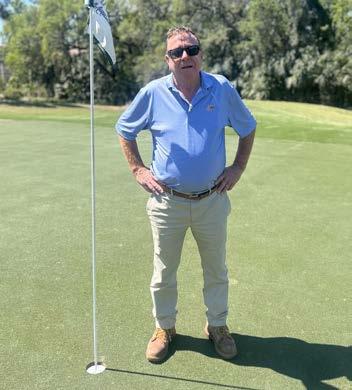
ACSP FOR GOLF
UNITED KINGDOM
RJ National Golf Course
UNITED STATES
MISSISSIPPI
Grand Bear
NEW JERSEY
Green Knoll Golf Course
NEW YORK
Sleepy Hollow Country Club
ST. KITTS
Marriott St. Kitts Resort
UNITED STATES
CALIFORNIA
Limantour Lodge- Point Reyes Lodging Corp.
Marriott’s Canyon Villas at Desert Ridge
Ojai Valley Inn
ACSP FOR GOLF
AUSTRALIA
Sanctuary Cove Golf and Country Club
BARBADOS
Apes Hill Inc.
CANADA
ALBERTA
Calgary Golf and Country Club
Silvertip Resort
BRITISH COLUMBIA
Gleneagles Golf Course
Highland Pacific Golf
McCleery Golf Club
MANITOBA
St. Charles Country Club
ONTARIO
Donalda Club
Granite Golf Club
RiverBend Golf Community
Stonebridge Golf Club
QUEBEC
Royal Ottawa Golf Club
Whitlock Golf and Country Club
La Iguana Golf Course/Los Sueños
Marriott Ocean & Golf Resort
Kuala Lumpur Golf & Country Club Berhad
TAIWAN
Wu Fong Golf Club
UNITED KINGDOM
Marriott St. Pierre Hotel & Country Club
Marriott Worsley Park Hotel & Country Club
UNITED STATES
ARIZONA
Anthem Golf and Country Club
Paradise Valley Country Club
CALIFORNIA
Coto De Caza Golf & Racquet Club
Deep Cliff Golf Course
Little River Inn Golf & Tennis
Los Lagos Golf Course
Maderas Golf Club
Mather Golf Course
Pacific Grove Golf Links
Redwood Canyon Golf Course
Spyglass Hill Golf Course
TPC Stonebrae
Yocha-De-He Golf Club at Cache Creek Casino Resort
COLORADO
Aspen Glen Club
Aspen Golf Club
Eagle Ranch Golf Club
Rollingstone Ranch Golf Club
Vail Golf Club: Vail Rec District
West Woods Golf Club
CONNECTICUT
Round Hill Club
Simsbury Farms Golf Course
DELAWARE
Deerfield Golf & Tennis Club:
White Clay Creek State Park
Fieldstone Golf Club
Peninsula Golf & Country Club
Wilmington Country Club
FLORIDA
BallenIsles Country Club
Country Club of Naples
Floridian National Golf Club
Glades Golf and Country Club
Hawk’s Landing Golf Club
at the Orlando World Center Marriott
IGM @ Sandridge Golf Club
Isleworth Country Club
Marriott The Rookery at Marco Island
Moorings Club at Hawk’s Nest
Olde Florida Golf Club
Pelican Sound Golf & River Club
Queens Harbour Yacht & Country Club
St. Andrews Club Inc.
Windstar on Naples Bay
IOWA
Des Moines Golf & Country Club
Honey Creek-The Preserve on Rathbun Lake
ILLINOIS
Cantigny Golf Club
Heritage Bluffs Public Golf Club
Sandy Hollow Golf Course
TPC Deere Run
Urbana Country Club
KANSAS
Sand Creek Station Golf Course
St. Andrews Golf Course
KENTUCKY
Frankfort Country Club
Kearney Hill Golf Links
Lakeside Golf Course
Tates Creek Golf Course
LOUISIANA
TPC Louisiana
MAINE
Portland Country Club
MARYLAND
Compass Pointe Golf Courses
Lakewood Country Club
Queenstown Harbor
TPC Potomac
MASSACHUSETTS
Concord Country Club

Dedham Country and Polo Club
Needham Golf Club
Olde Scotland Links Golf Course
MICHIGAN
Crystal Downs Country Club
Lakelands Golf & Country Club
Leslie Park Golf Course
Radrick Farms Golf Course
University of Michigan
MINNESOTA
Baker National Golf Course
Braemar Golf Course
Dwan Golf Course
Town & Country Club
Wayzata Country Club
NEVADA
Montreux Golf & Country Club
NEW JERSEY
Heron Glen Golf Course
Spring Brook Country Club
NEW MEXICO
The Club at Las Campanas
NEW YORK
Mill Pond Golf Course
The Whippoorwill Club
NORTH CAROLINA
TPC Piper Glen
OHIO
Blacklick Woods Golf Course, Columbus and Franklin County Metro Parks
Moraine Country Club
TPC River’s Bend
OREGON
Bandon Dunes & Pacific Dunes Golf Courses
Bandon Trails & Bandon Preserve Golf Courses
Old Macdonald Golf Course at Bandon Dunes
PENNSYLVANIA
Merion Golf Club
Tam O’Shanter of Pennsylvania
RHODE ISLAND
Sakonnet Golf Club
SOUTH CAROLINA
Dataw Island Club
Palmetto Hall Golf and Country Club
SOUTH DAKOTA
Minnehaha Country Club
TENNESSEE
TPC Southwind
TEXAS
Lakeside Country Club
Lost Pines Golf Club
The Hills Country Club
Live Oak and Yaupon Courses
VIRGINIA
Algonkian Golf Course
Brambleton Golf Course
Hermitage Country Club
IGM at Lake of the Woods
Robert Trent Jones Golf Club
The Foundry Golf Club
WASHINGTON
Bellevue Golf Course
Overlake Golf & Country Club
Useless Bay Golf & Country Club
